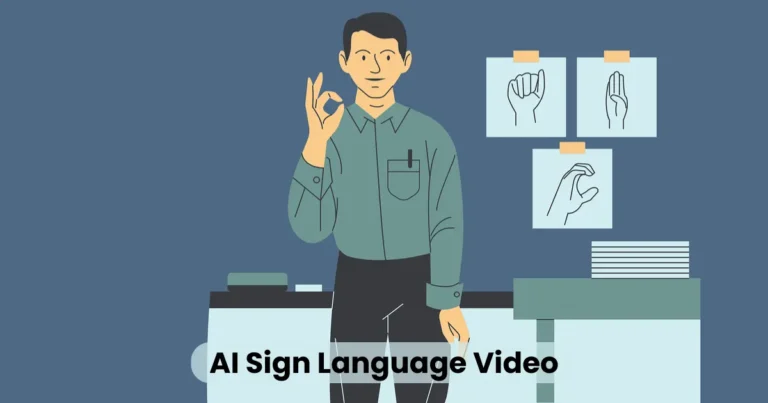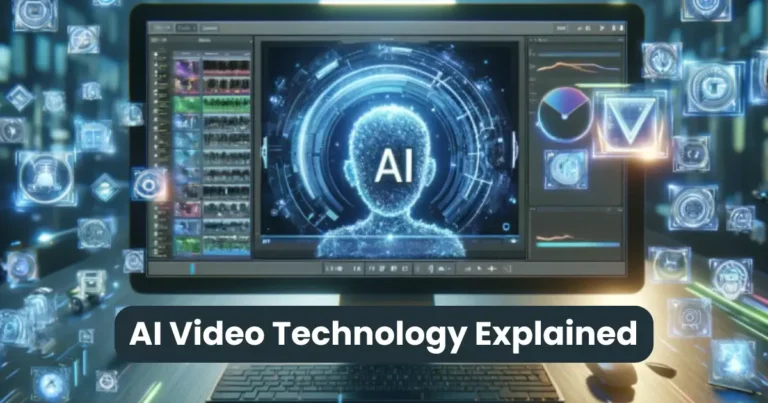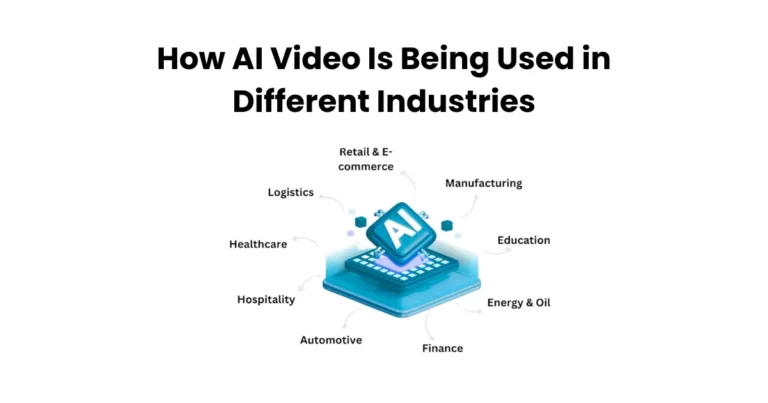Case Studies Comparing AI Video Output Quality

Contents
- 1 Understanding AI Video Output Quality
- 2 Methodology of Case Studies
- 3 Case Study 1: AI Video Output from Deep Learning Models
- 4 Case Study 2: AI Video Output in Real-Time Streaming
- 5 Case Study 3: AI Video Enhancement for Old Footage
- 6 Comparative Analysis of AI Video Output Quality
- 7 Practical Applications of AI Video Output Improvements
- 8 Future Trends in AI Video Output Quality
In the rapidly evolving field of digital media, case studies comparing AI video output quality play a crucial role in understanding how artificial intelligence transforms video production and enhancement. As AI technology advances, businesses and creators seek reliable insights to choose the best tools that deliver superior video quality. This article examines multiple case studies, highlighting the strengths and weaknesses of different AI approaches. By analyzing these comparisons, you will gain a clear picture of what influences AI video output quality and how to leverage it for your projects.
Understanding AI Video Output Quality
AI video output quality refers to the overall effectiveness of artificial intelligence systems in generating or enhancing video content. It involves several critical factors such as resolution, frame rate, color accuracy, and smoothness of motion. High-quality AI-generated videos appear natural and immersive, avoiding distortions or unnatural artifacts that can distract viewers.
Moreover, AI video quality depends heavily on the algorithms powering the system. For example, some AI models focus on improving image sharpness, while others prioritize consistent frame transitions or noise reduction. Transitioning from traditional video processing techniques to AI-driven methods has significantly raised the bar, offering new possibilities for content creators, broadcasters, and streaming services.
Understanding these components is essential when analyzing case studies comparing AI video output quality, as it helps pinpoint what makes one AI solution outperform another in real-world applications.
Methodology of Case Studies
To ensure accurate and fair insights, researchers adopted a consistent methodology when conducting case studies comparing AI video output quality. First, they selected a variety of AI video generation and enhancement tools, each representing different technological approaches like deep learning, neural networks, and real-time processing algorithms.
Next, they used identical source videos across all tests to maintain consistency in evaluation. This approach allowed direct comparison of output quality without bias from varying input material. Researchers then assessed each AI output based on technical metrics, including resolution, frame rate stability, color fidelity, and artifact presence.
In addition to quantitative measures, viewer perception studies played a vital role. Focus groups and expert panels reviewed the videos to rate overall visual appeal and naturalness, providing a well-rounded analysis of AI performance. By combining objective data and subjective feedback, the case studies delivered comprehensive insights into how different AI solutions perform under diverse conditions.
This rigorous methodology ensures the findings in these case studies comparing AI video output quality are reliable, actionable, and relevant for both professionals and enthusiasts.
Case Study 1: AI Video Output from Deep Learning Models
The first case study focused on AI video output generated using advanced deep learning models, including Generative Adversarial Networks (GANs) and Convolutional Neural Networks (CNNs). These models have become the cornerstone of AI-driven video creation due to their ability to learn complex patterns from vast datasets.

In this study, researchers tested several popular deep learning frameworks on identical video content. GAN-based models excelled at producing highly realistic textures and details, often generating lifelike facial expressions and natural backgrounds. However, they occasionally struggled with maintaining smooth motion between frames, leading to slight jitters or inconsistencies.
On the other hand, CNN-based models demonstrated superior frame consistency, ensuring fluid motion throughout the video. While their textures were sometimes less detailed than GAN outputs, their videos felt more stable and visually coherent over time.
Overall, this case study highlights that deep learning models offer powerful tools for AI video production but also present trade-offs. Selecting the right model depends on whether the priority lies in visual detail or motion stability. Such insights are essential when evaluating case studies comparing AI video output quality to match AI capabilities with specific project needs.
Case Study 2: AI Video Output in Real-Time Streaming
The second case study examined AI video output quality in real-time streaming environments. Live streaming demands low latency and consistent video clarity, even under fluctuating network conditions. AI plays a vital role in optimizing these factors by dynamically adjusting video parameters on the fly.

Researchers tested several AI-powered adaptive bitrate algorithms designed to maintain smooth playback without sacrificing too much resolution. The results showed that these AI systems effectively minimized buffering and reduced pixelation during bandwidth drops. Viewers reported a noticeably improved experience with fewer interruptions and clearer visuals compared to traditional streaming methods.
Moreover, the AI models demonstrated impressive ability to predict and compensate for network fluctuations in real time, allowing video quality to adjust seamlessly. This case study highlights how AI not only enhances video quality but also significantly improves user experience in live streaming scenarios.
Understanding these strengths is crucial when reviewing case studies comparing AI video output quality, especially for applications where immediacy and stability are paramount.
Case Study 3: AI Video Enhancement for Old Footage
The third case study explored AI video output quality in the restoration and enhancement of old or degraded footage. Historical and archival videos often suffer from low resolution, noise, and color fading, making them prime candidates for AI-powered improvement.

In this study, various AI tools were applied to enhance vintage videos by removing noise, sharpening blurry details, and restoring original colors through intelligent colorization techniques. The AI algorithms successfully elevated video quality without compromising the authenticity of the footage. Viewers noted clearer images, richer colors, and smoother transitions that preserved the historical context while making the content visually appealing for modern audiences.
This case demonstrates the transformative potential of AI in breathing new life into old videos. When reviewing case studies comparing AI video output quality, it becomes evident that AI restoration tools play a crucial role in media preservation and revitalization.
Comparative Analysis of AI Video Output Quality
After examining multiple case studies comparing AI video output quality, clear differences emerge in how various AI approaches perform across applications. Deep learning models like GANs deliver strikingly realistic textures but sometimes struggle with smooth motion, whereas CNNs provide consistent frame-to-frame stability at a slight cost to detail. Meanwhile, AI-powered adaptive streaming excels in maintaining viewer experience by dynamically balancing quality and buffering in real-time.
When it comes to enhancing old footage, AI algorithms show remarkable strength in noise reduction and color restoration, bringing archival videos up to modern standards without losing their original character. Each AI technology targets specific aspects of video quality, making it essential to match the tool to the task.
Transitioning between these use cases reveals that no single AI solution universally outperforms others. Instead, output quality depends heavily on factors like the intended application, input video characteristics, and the balance between visual fidelity and performance requirements.
This comparative analysis highlights why understanding the nuances in case studies comparing AI video output quality is vital for selecting the right AI tool to meet specific project goals effectively.
Practical Applications of AI Video Output Improvements
Improving AI video output quality has opened new doors across multiple industries, transforming how visual content is created, shared, and preserved. These advancements enable practical applications that were once impossible or too costly to achieve.

For filmmakers and content creators, AI-driven tools allow for faster production workflows, enhanced visual effects, and realistic animations without extensive manual effort. This reduces costs while maintaining high-quality standards.
In live streaming and broadcasting, AI enhances viewer experience by optimizing video clarity and reducing interruptions, even when network conditions fluctuate. This technology proves invaluable for gaming streams, virtual events, and remote communications.
AI also plays a critical role in restoring old footage, enabling archivists and historians to preserve cultural heritage by revitalizing degraded videos with improved resolution and color accuracy. This broadens access to historical content for educational and entertainment purposes.
Moreover, surveillance and security systems benefit from AI-enhanced video quality, offering clearer images for better identification and analysis.
These practical applications underscore the real-world impact of advances seen in case studies comparing AI video output quality, demonstrating AI’s growing influence on the future of video technology.
Future Trends in AI Video Output Quality
As technology evolves, the future of AI video output quality promises even more impressive breakthroughs. Emerging trends indicate that AI will continue to push the boundaries of what is possible in video generation and enhancement.

One key trend is the integration of multimodal AI systems that combine video with audio, text, and even 3D data to create richer, more immersive content. This holistic approach will improve context awareness, making AI-generated videos more engaging and coherent.
Real-time AI processing is also advancing rapidly. Future AI models will offer ultra-low latency with higher resolution, enabling seamless live streaming experiences even on constrained networks. This will benefit industries ranging from entertainment to telemedicine.
Another exciting development is the increased use of AI for personalized video content. AI will adapt videos dynamically to individual viewer preferences, enhancing user engagement and satisfaction.
Furthermore, AI-driven video compression algorithms will make high-quality videos more accessible by reducing bandwidth and storage requirements without compromising visual fidelity.
Staying informed about these trends is essential when evaluating case studies comparing AI video output quality, as the technology landscape continues to shift rapidly. Embracing these innovations will help creators and businesses stay ahead in a competitive digital world.
Conclusion
In summary, case studies comparing AI video output quality reveal a diverse landscape of strengths and challenges across different AI technologies. From deep learning models producing stunning visual details to real-time streaming AI ensuring smooth viewer experiences, each approach offers unique advantages tailored to specific needs. AI’s role in restoring old footage further showcases its transformative potential beyond modern content creation.
As AI continues to evolve, understanding these case studies helps professionals and creators make informed decisions about which tools best fit their projects. By leveraging AI’s capabilities, the future of video production and enhancement looks brighter, more efficient, and increasingly innovative.
For anyone invested in video technology, keeping pace with AI advancements and their practical applications is crucial. These insights empower you to harness AI’s full potential and deliver superior video output quality in an ever-changing digital landscape.






